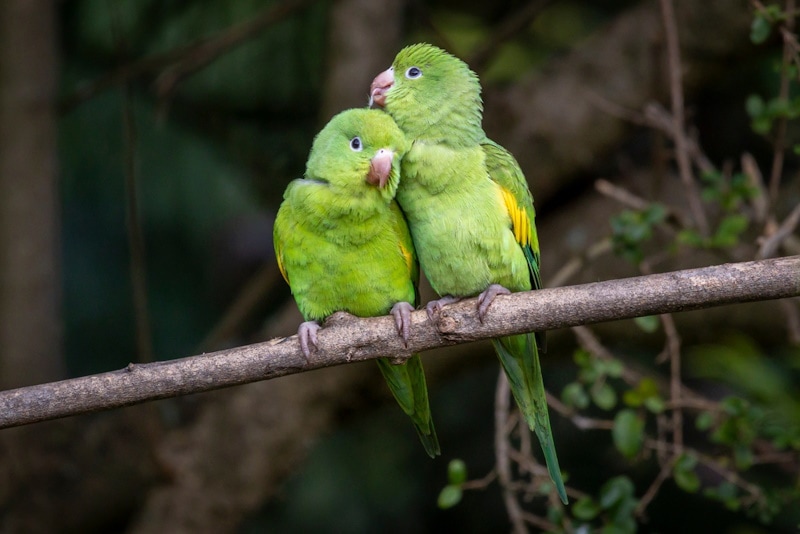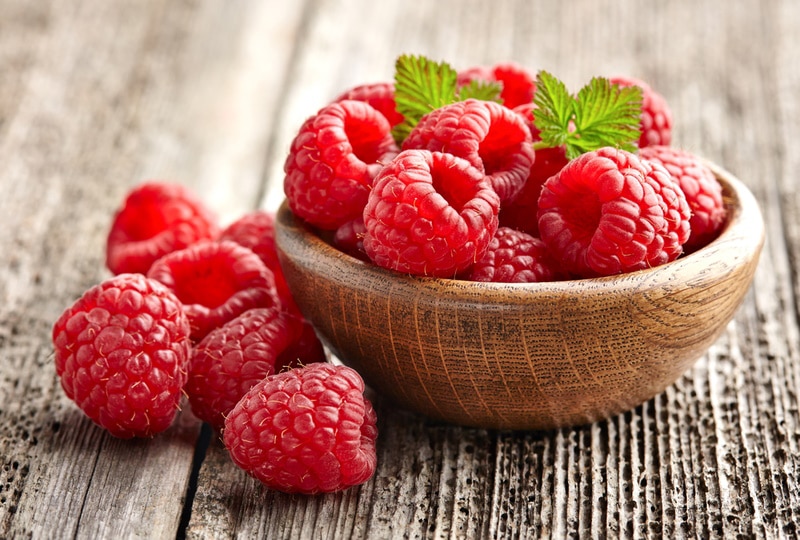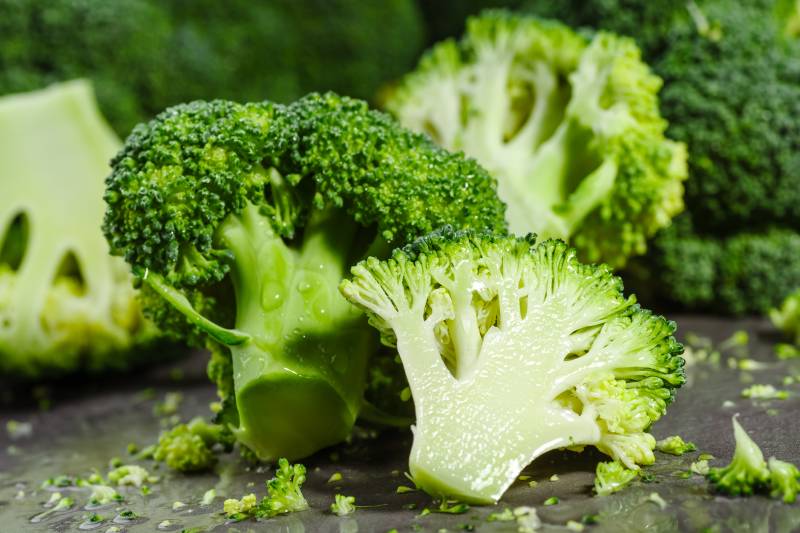10 Blue Pet Birds & Parrot Species You Can Bring Home (With Pictures)

Updated on
Birds are among the most interesting pets that you can own. They form strong bonds with their owners and are inquisitive and affectionate. It’s their plumage that gets most people talking, though, and while you can find pet bird species with feathers of all colors, blue is probably one of the most striking variations. Birds can have various shades, from deep indigo to a soft pastel hue.
If you love birds and the color blue, here are 10 blue pet birds and parrot species that will add a splash of color to your home.

The 10 Blue Pet Birds and Parrot Species
1. Blue Budgerigar (Blue Parakeet)

| Weight: | 1.1–1.4 oz. |
| Wingspan: | 10–14 in. |
| Life Expectancy: | 15–20 years |
| Cost: | $10–$60 |
The blue budgerigar is adored for their bright voice and vibrant plumage. You can find them in several colors, though blue is one of their most striking.
Native to Australia and commonly known as parakeets in the U.S.A., budgerigars are among the most popular birds to keep as pets. They’re easy to care for, small in size, and well suited to first-time bird owners, which makes them popular in pet stores and rescues. Budgerigars are also known for being easy to train and are quick to pick up on vocabulary.
No matter what color they are, budgies should always have companionship. They form strong bonds with their owners, but you should consider buying or adopting a pair or a small flock so your bird always has a friend.
- Perfect for first-time bird owners
- Small and easy to maintain
- Should live in pairs or flocks
2. Blue and Gold Macaw
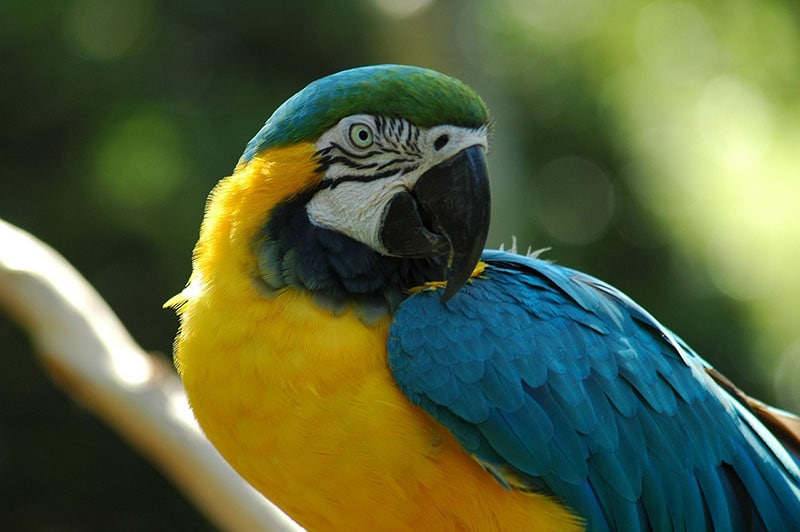
| Weight: | 32–43.2 oz. |
| Wingspan: | 41–45 in. |
| Life Expectancy: | 50–60 years |
| Cost: | $700–$2,500 |
One of the most recognizable parrot species is the blue and gold macaw. If you’re looking for a vibrantly colored blue pet bird, the blue and gold macaw is a beautiful choice. Their undercarriage is completely yellow, while their back and the top of their wings are a deep blue color. They also have green markings on their head.
Originally native to South America, macaws are loved for their ability to talk, their coloring, and their availability, though they can be costly. If you do get one, keep in mind that these birds are incredibly long-lived and might even outlive you.
Unlike some smaller birds, blue and gold macaws are among the hardest to look after. They need a great deal of space to stretch their wings and can be destructive.
- Long-lived
- Capable of speech
- Can be destructive
3. Blue-headed Pionus
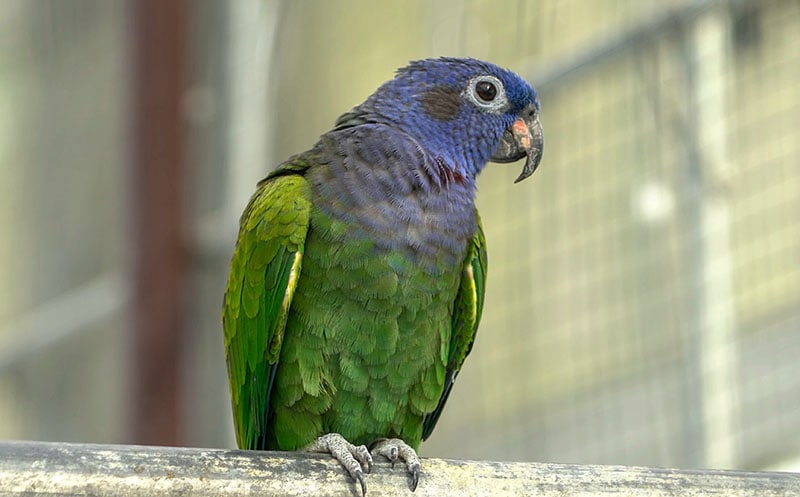
| Weight: | 1.1–1.4 lbs. |
| Wingspan: | 7 in. |
| Life Expectancy: | 25–40 years |
| Cost: | $850–$1,500 |
The blue-headed pionus—or blue-headed parrot—might be predominantly green in color, but their heads are such a vibrant shade of blue that they’ve earned a place on this list. They’re intelligent, curious, sociable, and highly affectionate toward their owners. Like most other parrot species, these birds are native to the southern parts of Central America and the tropical and subtropical areas of South America.
They’re a great choice if you prefer a small, quiet parrot. However, they are still noisy birds, even if they’re not as loud as some other parrot species. If you want a bird that is good at mimicking human speech, though, this species isn’t the best choice. They’re not known for their speaking ability.
- Affectionate
- Highly intelligent
- Quieter than most other parrot species
- Not great at speaking
4. Blue-Masked Lovebird
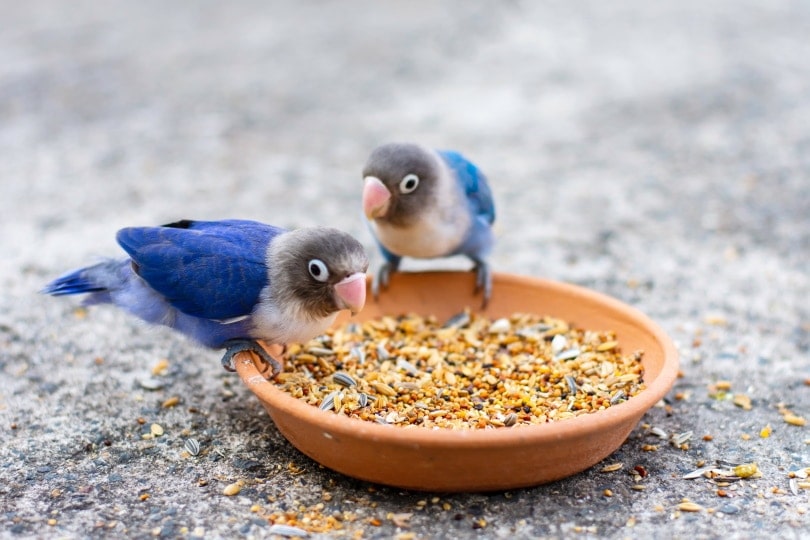
| Weight: | 1.4–2 oz. |
| Wingspan: | 3.5–3.9 in. |
| Life Expectancy: | 18–20 years |
| Cost: | $50–$150 |
So-called for the bond that they create with the birds that they’re paired with, the blue-masked lovebird can be a friendly, sociable, and vibrant addition to your home. Their blue feathers, white collar, and black head give them an eye-catching appearance both in the wild and in captivity.
These birds are rarely sold as individuals. They’re sociable creatures that do best as part of a pair, and breeders will sell them in twos to ensure that they always have companionship. It can be difficult to build a bond with a pair of lovebirds, though, as their attention is mostly on the other. Most blue-masked lovebirds will still form a strong attachment to their owner and are easy to care for, making them suitable for beginners.
- Form strong bonds with their owners
- Sociable and friendly
- Prefers being part of a pair
5. Blue Indian Ringneck Parakeet
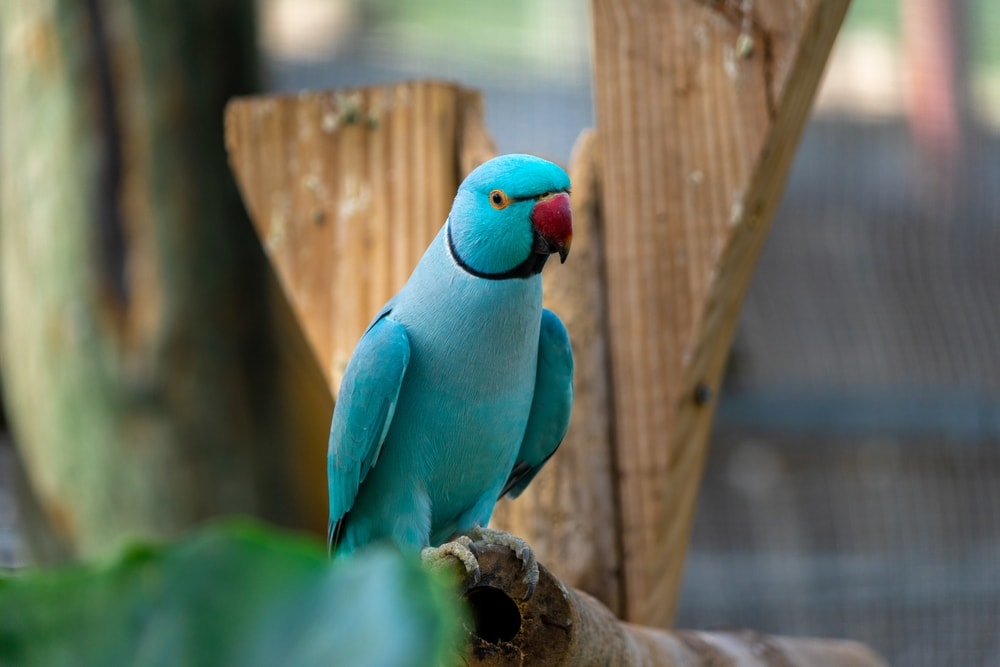
| Weight: | 4–5 oz. |
| Wingspan: | 6–7 in. |
| Life Expectancy: | 30+ years |
| Cost: | $250–$1,200 |
The blue Indian ringneck parakeet was developed by selective breeding, but that doesn’t mean the color is any less vibrant than birds with natural blue feathers. They are hardy and adaptable, making them relatively easy to care for and a common sight in the wild across the world. Their most notable presence is in London, as one of the U.K.’s only naturalized parrot species, though you won’t see many blue parakeets in the wild.
These birds are highly sociable but are sensitive to loud noises. They form strong bonds with their owners but aren’t suited to families with children. Although they’re not one of the largest birds on this list, they still require a great deal of space so they can fly around.
- Highly adaptable
- Sociable
- Can be taught how to whistle and talk
- Sensitive to loud noises
6. Blue-Throated Macaw

| Weight: | 31.7–38.8 oz. |
| Wingspan: | 36 in. |
| Life Expectancy: | 50–80 years |
| Cost: | $1,500–$3,000 |
An easy-to-recognize blue parrot is the blue-throated macaw. Native to Bolivia, they can bite and be destructive, but they’re also highly intelligent and easy to train. Macaws are also well-known for their speaking ability, though some can only mimic speech.
Although these birds look incredibly similar to the blue and gold macaw, they’re different species, and there’s an easy distinction. The blue and gold macaw has black and green markings along with the blue and gold feathers, while the blue-throated macaw only has blue and gold coloring. Blue-throated macaws are also rarer and far more endangered, with only 350–450 remaining in the wild.
- Long-lived
- Highly affectionate
- Can be destructive
7. Hyacinth Macaw
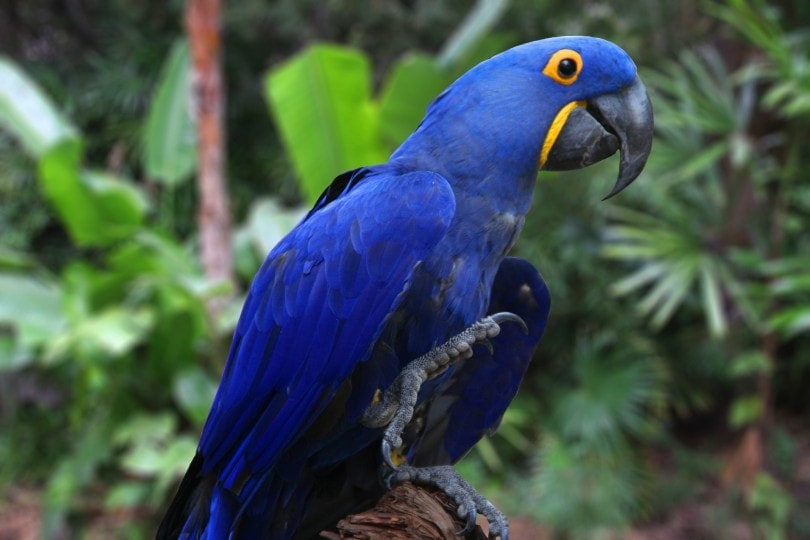
| Weight: | 42.3–59.9 oz. |
| Wingspan: | 48 in. |
| Life Expectancy: | 15–20 years |
| Cost: | $8,000–$10,000+ |
If you’re looking for a completely blue pet bird, the hyacinth macaw is one of the finest examples. Their deep blue feathers are contrasted by the small yellow patches around their eyes and at the base of their beak. Like other macaw species, they’re good at mimicking human speech but aren’t as skilled as some other species.
The hyacinth macaw isn’t one of the longest-lived parrots, but they still have incredibly long lifespans and can outlive their owners. They’re known to be affectionate but can cause accidental injuries by biting due to the size and strength of their beak.
Out of the blue parrot species on this list, the hyacinth macaw is one of the most expensive and isn’t recommended for novice bird owners.
- Gentle giants
- Long-lived
- Expensive
- Not recommended for novice bird owners
8. Lear’s Macaw (Indian Macaw)
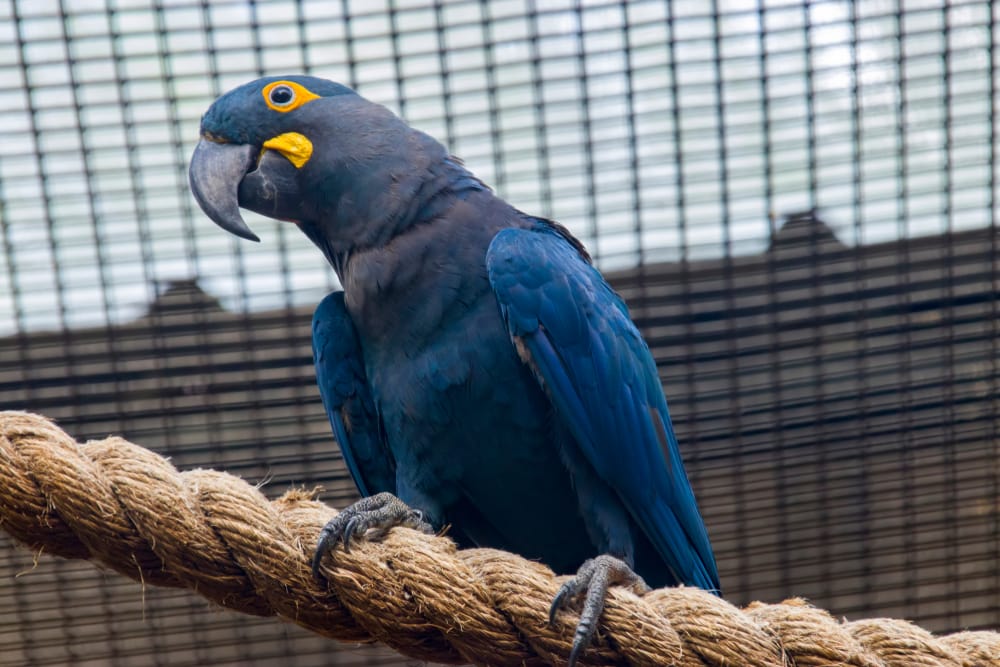
| Weight: | 33.2 oz. |
| Wingspan: | 39.3 in. |
| Life Expectancy: | 30–50+ years |
| Cost: | $3,000+ |
Named after Edward Lear, an English artist who often used the species in his work, the Lear’s macaw is easy to mistake for the larger hyacinth macaw. Along with being the smaller of the two nearly identical species, Lear’s macaw can be distinguished by the faint greenish hue on their feathers and their limited native range. They are considered endangered in the wild, despite their popularity as pets.
Before they were classed as a separate species, they were considered to be a hybrid of the hyacinth macaw and the glaucous macaw. Lear’s macaws are among the rarest macaw species alive today, which makes finding them for affordable prices or at most pet stores a challenge. They’re often a victim of poaching and the illegal pet trade.
- Vibrant plumage
- Long-lived
- Easy to confuse with the hyacinth macaw
9. Pacific Parrotlet
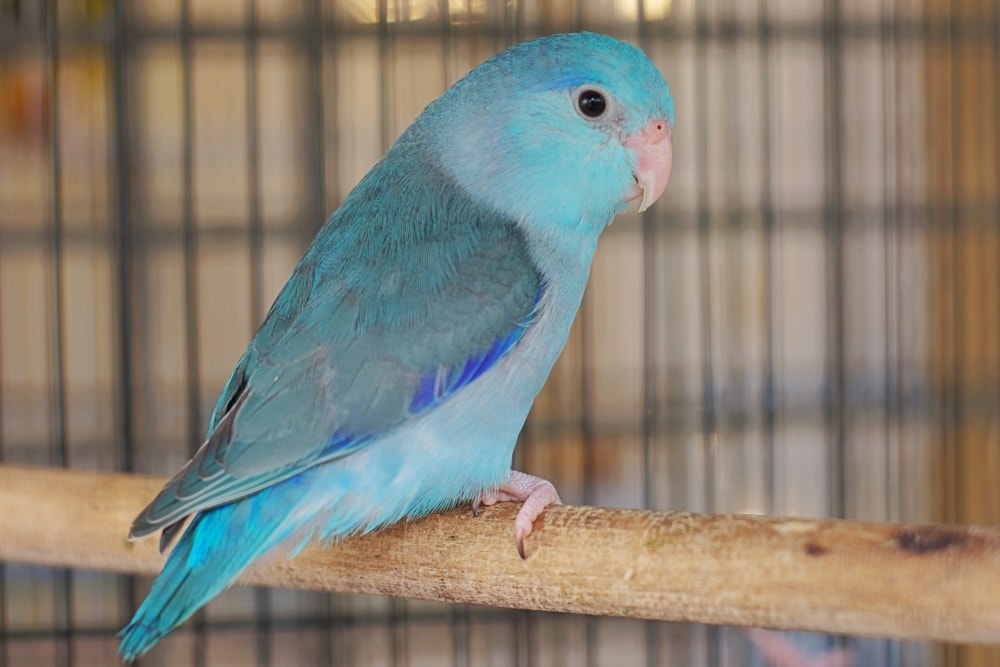
| Weight: | 0.6–1 oz. |
| Wingspan: | 9.5 in. |
| Life Expectancy: | 12–20 years |
| Cost: | $120–$350 |
If you don’t have space or money for a full-size parrot, a parrotlet is basically a big parrot in a small package. They also tend to be much quieter than larger parrot species, but you can still teach them to mimic a few human words, even if they’re not the best at it.
Pacific parrotlets are mischievous, energetic, and intelligent with an incredibly curious nature. You can get them in several colors, including a soft pastel blue. They were given the nickname “pocket parrots” due to their size and their habit of hitching a ride in your pocket as you move around the house.
Although they’re among the cheaper birds available, they do require a great deal of attention. They need plenty of activity and interaction with their owners. If they’re not handled enough, they can become moody and aggressive.
- Affectionate and playful
- Much smaller than full-size parrots
- Relatively quiet
- Can become aggressive if not handled enough
10. Quaker Parrot
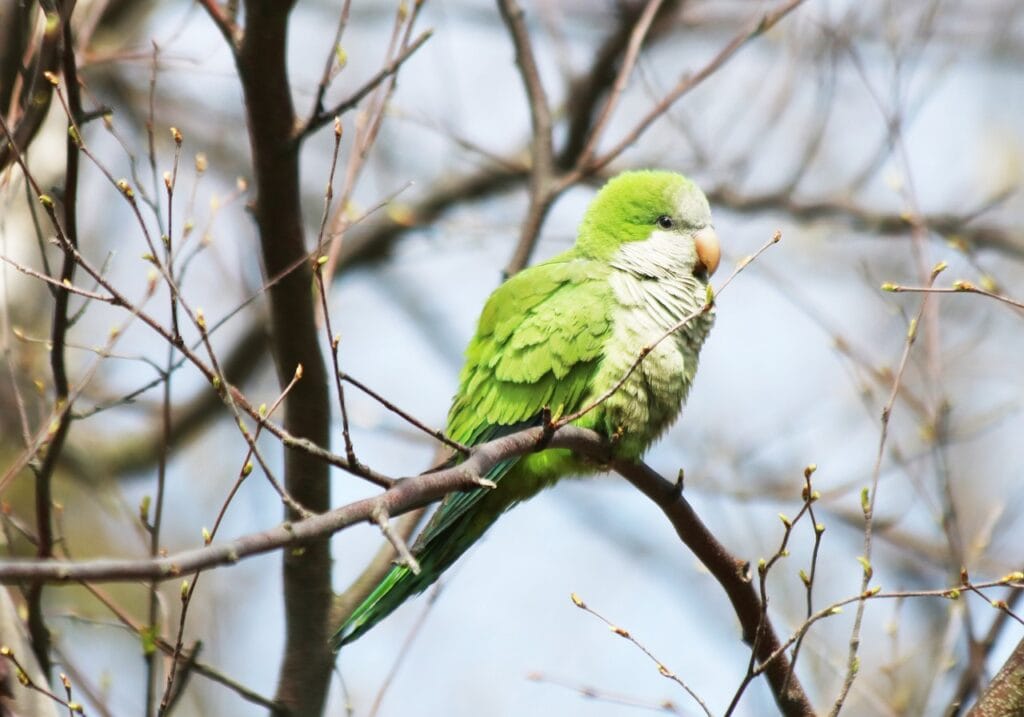
| Weight: | 3.5 oz. |
| Wingspan: | 19–20 in. |
| Life Expectancy: | 20–30 years |
| Cost: | $400–$900 |
The blue Quaker parrot, or the blue monk parakeet, only has two color varieties. Green is the most common, but they’re also available in blue due to selective breeding. They’re self-assured and not afraid to face off against animals bigger than they are. Quaker parrots are also inquisitive, highly intelligent, and long-lived.
This species is one of the most controversial birds on this list. They’re illegal in some states, both to own or sell, due to the hazard that they pose to local crops, and they’re considered agricultural pests. Despite the controversy surrounding them, though, they will make strong bonds with multiple people in the house, making them well-suited for families.
- Can bond with multiple people
- Inquisitive
- Highly intelligent
- Illegal in some states

Should You Own a Blue Pet Bird?
If you love the color blue and birds, finding a species with the perfect shade of blue feathers is a delight. However, you shouldn’t get a pet just because they’re your favorite color. Pet birds require a great deal of care and can be quite expensive. Some of the larger parrots, like the hyacinth macaw, can cost around $10,000, and that doesn’t include the cost of their cage or other needs.
You should also consider that many of these bird species are considered endangered. They might be popular pets, but their numbers in the wild are decreasing, and illegal poaching for the pet trade is often one of the reasons. If you do decide to purchase a pet bird, do your research into the breeder and the bird’s origins to make sure they’re not a wild bird that is being sold illegally.
Owning a pet bird isn’t the only way that you can help. If you can’t afford a pet bird of your own, consider donating to one of the conservation agencies dedicated to protecting the wild population. You’ll be able to save your favorite blue-colored birds even if you can’t afford to keep one of your own.
Conclusion
Whether you prefer pastel blue or a deeper shade, there’s bound to be a blue pet bird that you’ll fall in love with. Not all the birds listed here are good matches for new bird owners, though, and you should consider their personality, cost, and maintenance needs before settling on your final choice.
Remember to consider your budget too. Many large parrot species cost a small fortune even before you buy the supplies that you need. To keep them and yourself happy, you’ll need to carefully consider your existing monetary responsibilities and ensure that you can afford to keep one.
Featured Image Credit: Shutterstock


